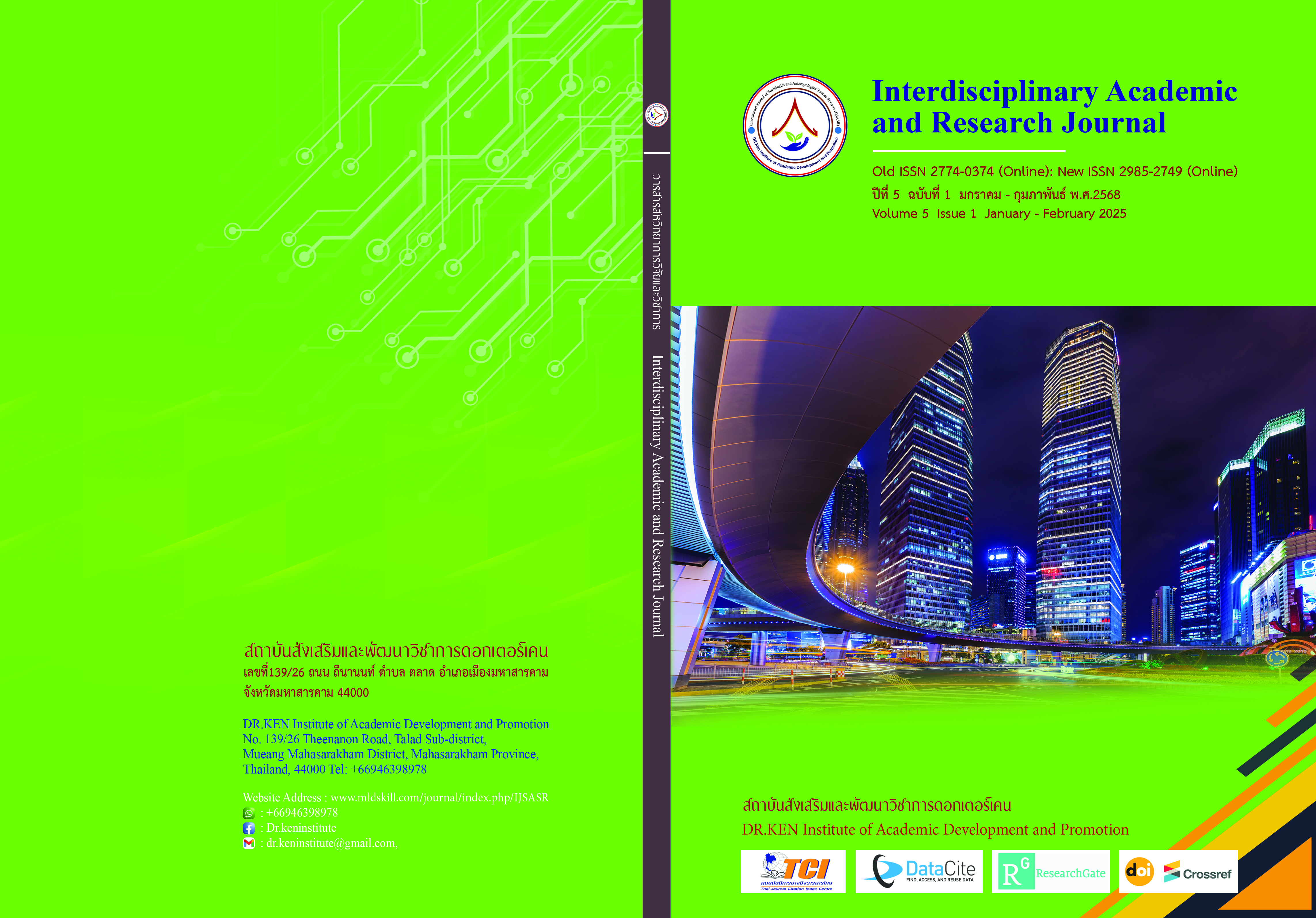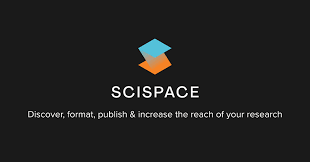Integrated Marketing Communications that Affect the Image of the Miss Grand Thailand Pageant and to Promote Tourism in Thailand
DOI:
https://doi.org/10.60027/iarj.2025.280221Keywords:
Miss Grand Thailand, Integrated marketing communication, Perception, TourismAbstract
Background and Aims: Miss Grand Thailand pageant is a significant platform for promoting Thai tourism and culture, generating revenue, and enhancing the country's image. It attracts tourists, stimulates spending in related businesses, showcases Thai culture to the world, and positions Thailand as an attractive tourist destination. Additionally, it promotes the Thai beauty and fashion industry, creates business opportunities, and develops tourism personnel. The pageant serves as both a beauty contest and an effective marketing tool for promoting the country's tourism. This research aims to 1) study the perception through integrated marketing communications of Miss Grand Thailand, 2) compare opinions on integrated marketing communications influencing the perception of Miss Grand Thailand, and 3) examine the influence of integrated marketing communications on the perception of Miss Grand Thailand.
Methodology: A mixed-method approach was employed, combining quantitative research using an online questionnaire with 500 samples selected through systematic sampling (IOC = 0.67, reliability = 0.920), and qualitative research through in-depth interviews with 9 key informants. Data were analyzed using descriptive and inferential statistics, including t-test, ANOVA, and Multiple Regression Analysis.
Results: The study found that 1) respondents had a moderate level of perception through integrated marketing communications, especially in social media and digital trend creation; 2) gender, age, education level, and income significantly affected the perception of integrated marketing communications of Miss Grand Thailand (p < 0.05), while occupation and domicile did not; 3) integrated marketing communications positively correlated with the image of Miss Grand Thailand (p < 0.001), with high correlations in electronic communications (r = 0.689) and public relations (r = 0.618), and moderate correlations in viral marketing, advertising, sales promotion, and direct marketing.
Conclusion: Integrated marketing communications focusing on digital media and creating shared experiences are highly effective in generating positive perceptions and attitudes towards Miss Grand Thailand. Strategies should be tailored to the demographic characteristics of target groups to enhance the promotion of Thai tourism and culture through the pageant.
References
กรมการท่องเที่ยว. (2565). รายงานสถิติการท่องเที่ยวประจำปี 2564. กรุงเทพฯ: กระทรวงการท่องเที่ยวและกีฬา.
กระทรวงการท่องเที่ยวและกีฬา. (2563). รายงานภาวะเศรษฐกิจท่องเที่ยว ปี 2562. กรุงเทพฯ: กระทรวงการท่องเที่ยวและกีฬา.
การท่องเที่ยวแห่งประเทศไทย. (2565). รายงานผลกระทบของการจัดกิจกรรมส่งเสริมการท่องเที่ยว. กรุงเทพฯ: ททท.
ธนกฤต วงศ์มหาเศรษฐ์ และ กาญจนา มีศิลปวิกกัย. (2565). กลยุทธ์การสื่อสารการตลาดแบบบูรณาการเพื่อส่งเสริมการท่องเที่ยวเชิงสร้างสรรค์ในจังหวัดน่าน. วารสารนิเทศศาสตร์และนวัตกรรม นิด้า, 9(1), 1-14.
ธานินทร์ ศิลป์จารุ. (2563). การวิจัยและวิเคราะห์ข้อมูลทางสถิติด้วย SPSS และ AMOS (พิมพ์ครั้งที่ 18). กรุงเทพฯ: บิสซิเนสอาร์แอนด์ดี.
พิชามญชุ์ เกียรติวุฒิอมร และ ศศิประภา พันธนาเสวี. (2564). การสื่อสารการตลาดแบบบูรณาการที่ส่งผลต่อการตัดสินใจท่องเที่ยวในประเทศไทยของนักท่องเที่ยวชาวไทย. วารสารการบริหารและการจัดการ มหาวิทยาลัยเทคโนโลยีพระจอมเกล้าธนบุรี, 11(2), 16-30
พีรดา ทิพย์รส. (2562). ภาพลักษณ์การประกวดนางงามไทยในสายตาชาวต่างชาติ. วารสารการท่องเที่ยวไทยนานาชาติ, 15(1), 78-95.
วาโร เพ็งสวัสดิ์. (2551). วิธีวิทยาการวิจัย. กรุงเทพฯ: สุวีริยาสาส์น.
ศูนย์วิจัยด้านการท่องเที่ยว. (2565). บทบาทของการประกวดความงามต่อการท่องเที่ยวไทย. กรุงเทพฯ: การท่องเที่ยวแห่งประเทศไทย.
สมชาย วงศ์. (2564). การแข่งขันนางงามและสังคมไทย: กรณีศึกษาเวทีการประกวด "มิสแกรนด์ไทยแลนด์. วารสาร Veridian E-Journal สังกัดมหาวิทยาลัย: มหาวิทยาลัยศิลปากร, 14(4), 1775-1792.
สมาคมโรงแรมไทย. (2565). รายงานสถานการณ์ธุรกิจโรงแรมไทยประจำปี 2564. กรุงเทพฯ: สมาคมโรงแรมไทย.
สำนักงานส่งเสริมการจัดประชุมและนิทรรศการ. (2564). รายงานประจำปี 2563. กรุงเทพฯ: สำนักงานส่งเสริมการจัดประชุมและนิทรรศการ.
สำนักงานสถิติแห่งชาติ. (2565). รายงานผลกระทบทางเศรษฐกิจจากการจัดกิจกรรมส่งเสริมการท่องเที่ยว. กรุงเทพฯ: กระทรวงดิจิทัลเพื่อเศรษฐกิจและสังคม.
Balmer, J. M. (2020). The corporate identity, total corporate communications, stakeholders' attributed identities, identifications and behaviours continuum. European Journal of Marketing, 54(1), 63-90.
Batra, R., & Keller, K. L. (2016). Integrating marketing communications: New findings, new lessons, and new ideas. Journal of Marketing, 80(6), 122-145.
Belch, G. E., & Belch, M. A. (2018). Advertising and promotion: An integrated marketing communications perspective. McGraw-Hill Education.
Berger, J. (2013). Contagious: Why things catch on. Simon and Schuster.
Blattberg, R. C., & Neslin, S. A. (1990). Sales promotion: Concepts, methods, and strategies. Prentice Hall.
Chaffey, D., & Ellis-Chadwick, F. (2019). Digital marketing. Pearson UK.
Cochran, W. G. (1977). Sampling techniques (3rd ed.). New York: John Wiley & Sons.
Cohen, C. B., Wilk, R., & Stoeltje, B. (Eds.). (2020). Beauty queens on the global stage: Gender, contests, and power. Routledge.
Crawford, B., & Stacey, E. (2019). Beauty pageants and nation branding: Miss Universe and the construction of national identities. Journal of Tourism and Cultural Change, 17(4), 421-437.
Creswell, J. W. (2013). Qualitative inquiry and research design: Choosing among five approaches. Sage.
Creswell, J. W., & Poth, C. N. (2018). Qualitative inquiry and research design: Choosing among five approaches. Sage.
Dwivedi, Y. K., Ismagilova, E., Hughes, D. L., Carlson, J., Filieri, R., Jacobson, J., ... & Wang, Y. (2021). Setting the future of digital and social media marketing research: Perspectives and research propositions. International Journal of Information Management, 59, 102168.
Entman, R. M. (1993). Framing: Toward clarification of a fractured paradigm. Journal of Communication, 43(4), 51-58.
Fusch, P. I., & Ness, L. R. (2015). Are we there yet? Data saturation in qualitative research. The Qualitative Report, 20(9), 1408-1416.
Grunig, J. E., & Hunt, T. (1984). Managing public relations. Holt, Rinehart and Winston
Guest, G., Namey, E. E., & Mitchell, M. L. (2013). Collecting qualitative data: A field manual for applied research. Sage.
Hair, J. F., Black, W. C., Babin, B. J., & Anderson, R. E. (2018). Multivariate data analysis (8th ed.). Cengage Learning EMEA.
Kim, S., & Krishna, A. (2021). Unpacking public sentiment toward the government: How citizens' perceptions of government communication strategies impact public engagement, cynicism, and communication behaviors in South Korea. Public Relations Review, 47(1), 101985.
Kliatchko, J. (2008). Revisiting the IMC construct: A revised definition and four pillars. International Journal of Advertising, 27(1), 133-160.
Kotler, P., & Armstrong, G. (2018). Principles of marketing. Pearson Education
Kotler, P., & Keller, K. L. (2016). Marketing management. Pearson Education.
Lee, Y., & Zhang, K. (2019). The power of perceptions: Perceived social media influence and brand outcomes. Journal of Business Research, 103, 426-437.
Li, M., & Cai, L. A. (2020). Integrated marketing communication and destination image: A meta-analysis. Journal of Travel Research, 59(7), 1242-1260.
Miss Grand Thailand. (2023). About us. Retrieved April 14, 2024. from https://www.missgrandthailand.com/about-us.
Neyman, J. (1934). On the two different aspects of the representative method: The method of stratified sampling and the method of purposive selection. Journal of the Royal Statistical Society, 97(4), 558-625.
Pike, S. (2008). Destination marketing: An integrated marketing communication approach. Butterworth-Heinemann.
Ranganath, C., & Rainer, G. (2003). Neural mechanisms for detecting and remembering novel events. Nature Reviews Neuroscience, 4(3), 193-202.
Scheufele, D. A., & Tewksbury, D. (2007). Framing, agenda setting, and priming: The evolution of three media effects models. Journal of Communication, 57(1), 9-20.
Šerić, M., Gil-Saura, I., & Ruiz-Molina, M. E. (2015). How can integrated marketing communications and advanced technology influence the creation of customer-based brand equity? Evidence from the hospitality industry. International Journal of Hospitality Management, 39, 144-156.
Smith, J. Q., Jones, M. R., & Brown, C. D. (2020). Advancing Managerial Evolution and Resource Management in Contemporary Business Landscapes. Journal of Management Studies, 58, 1-25.
Stepchenkova, S., & Li, X. (2019). Destination image: Concepts, methods, and applications. Journal of Travel Research, 58(8), 1222-1240.
Tuchman, G. (1978). The symbolic annihilation of women by the mass media. In G. Tuchman, A. K. Daniels, & J. Benet (Eds.), Hearth and home: Images of women in the mass media (pp. 3–38). Oxford University Press.
Yan, Y., & Bissell, K. (2014). The globalization of beauty: How is ideal beauty influenced by globally published fashion and beauty magazines? Journal of Intercultural Communication Research, 43(3), 194-214.
Yoo, J. J. E., & Weber, K. (2018). The effect of integrated marketing communication on destination brand equity and destination image formation. Journal of Travel & Tourism Marketing, 35(5), 591-605.
Downloads
Published
How to Cite
Issue
Section
License
Copyright (c) 2025 Interdisciplinary Academic and Research Journal

This work is licensed under a Creative Commons Attribution-NonCommercial-NoDerivatives 4.0 International License.
Copyright on any article in the Interdisciplinary Academic and Research Journal is retained by the author(s) under the under the Creative Commons Attribution-NonCommercial-NoDerivatives 4.0 International License. Permission to use text, content, images, etc. of publication. Any user to read, download, copy, distribute, print, search, or link to the full texts of articles, crawl them for indexing, pass them as data to software, or use them for any other lawful purpose. But do not use it for commercial use or with the intent to benefit any business.
















.png)


